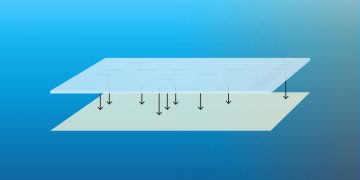
Cleaning the Nozzle Tip on the S3e™ Cell Sorter
In this short video, we show how to clean the nozzle tip on the S3e Cell Sorter.

Six Tips for Efficient Transfer of Your Proteins
A good and complete transfer of proteins from gels to membranes is crucial for the success of western blotting. Here are six useful tips for successful transfer of proteins.

Performing a Fluidics Hot Swap on the S3e™ Cell Sorter
In this video, we show how a fluidics hot swap can be performed without shutting down the S3e Cell Sorter.

Cleaning the Streams Camera Window on the S3e™ Cell Sorter
In this video we show you how to clean the camera streams window as part of routine maintenance for your S3e Cell Sorter.

Attaching a Dynaloop to the NGC™ Chromatography System
This video describes the three main steps in attaching a DynaLoop Sample Loop to the NGC™ Chromatography System to enable the injection of larger sample volumes: connecting the DynaLoop Sample Loop to the NGC Chromatography System, priming the DynaLoop Sample Loop, and creating a method in ChromLab™ Software.

Calibrating the pH Valve on the NGC™ Chromatography System
The NGC pH valve provides real-time, in-line monitoring of buffer pH. In this video, you’ll learn how to connect the pH valve to the NGC System, add it to the flow path, and calibrate the valve using buffers at two different pH values. Features of the pH valve include accessible calibration ports and easy bypass of the probe when the NGC System is being cleaned.

Tips and Strategies for Successful Purification of Your Proteins
A biomolecule protein purification workflow requires more than one resin. The trick is to find the combination of resins that provides the highest purity in the least number of steps and at the lowest cost. Here are some guides to select the optimal resins for the purification of monoclonal antibodies, native and recombinant proteins, Ig G and mammalian and adenovirus, and for removing aggregates and endotoxins.

Removing Air Bubbles from the NGC™ Chromatography System
This video explains how to remove bubbles and/or reduce bubble formation in your NGC System. Tips to reduce bubbles include warming up your multiwave detector for 30 to 60 min before use and flowing buffer at 0.1–0.2 ml/min in the manual mode until a stable/flat baseline is achieved before starting a method. The system may also be flushed with 100% methanol or ethanol at purge speed, with columns out of line, to remove bubbles.

Using the Air Sensor on the NGC™ Chromatography System
This video describes the functions of the Air Sensor Module and how to connect it to the NGC Chromatography System. The NGC Air Sensor senses the end of sample or buffer and prevents the introduction of air into the system, which can damage columns and/or incur the loss of precious samples. Both small and large air sensors are available to fit the tubing being used. Steps for connecting the Air Sensor Module and associated air sensors are described including how to add the air sensors into the system flow path using ChromLab™ Software and the differences in using the air sensors in manual vs. method modes.

A Superior Method for Parallel Analysis of RNA and Protein Expression from Cell Culture Lysates
It is imperative to analyze both the transcriptional and translational profiles for a complete understanding of the functioning of genes. Here we describe a simple protocol that enables parallel analysis of both RNA and protein from single cell culture lysates. See how this workflow could save time and money and yield more reliable data than the traditional protocols used.
